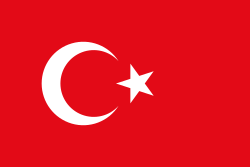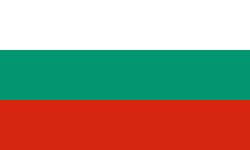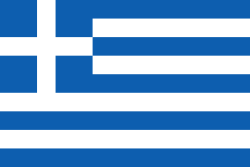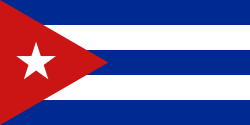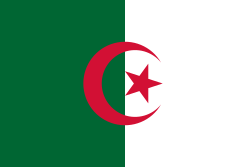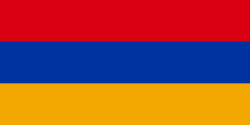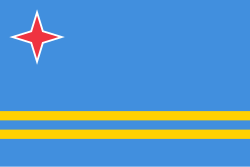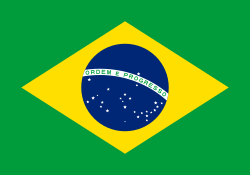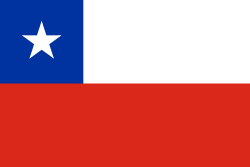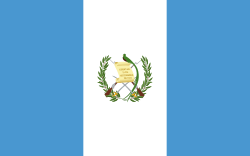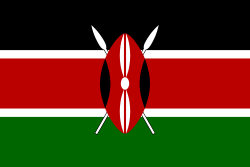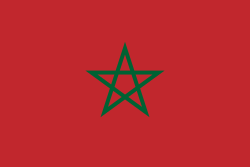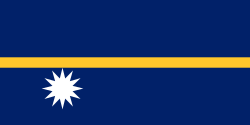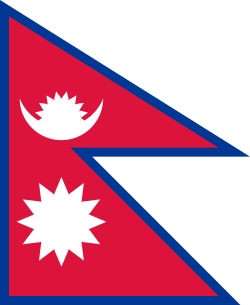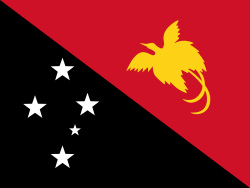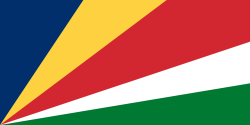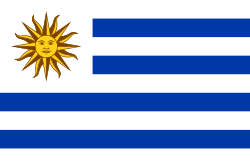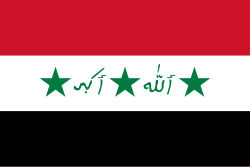Vzpírání na Letních olympijských hrách 1996
| Vzpírání na Letních olympijských hrách 1996 | ||||||||||||
|---|---|---|---|---|---|---|---|---|---|---|---|---|
| Základní údaje | ||||||||||||
| Pořadatel | Mezinárodní vzpěračská federace Mezinárodní olympijský výbor | |||||||||||
| Dějiště | Světové kongresové centrum Atlanta | |||||||||||
| Datum | 20. července - 30. července 1996 | |||||||||||
| Soutěže | 10 muži | |||||||||||
| Startující | 243 z 77 zemí | |||||||||||
| Soutěže | ||||||||||||
| ||||||||||||
| ||||||||||||
Vzpěračské soutěže na Letních olympijských hrách 1996 probíhaly od 20. do 30. července. Závodilo se v Hale E Světového kongresového centra (Georgia World Congress Center) v Atlantě, která disponovala kapacitou 5 000 sedících diváků. Soutěžilo se v 10 mužských kategoriích, medaile byly udělovány na základě výsledku v olympijském dvojboji. Hmotnostní kategorie byly odlišné oproti předchozím olympijským hrám a z důvodu zařazení ženského vzpírání do programu OH byly v následujícím olympijském cyklu opět změněny. Především díky této skutečnosti tak bylo vzpírání odvětvím, kde bylo překonáno nejvíce světových a olympijských rekordů. Vzpěračských soutěží se celkem zúčastnilo 253 závodníků ze 79 zemí a území.
Českou republiku reprezentoval v kategorii do 59 kilogramů Petr Stanislav, který s výkony 112,5 kg v trhu, 142,5 kg v nadhozu, 255 kg ve dvojboji a čtyřmi českými rekordy obsadil desáté místo. Roman Polom v kategorii do 99 kilogramů s výkony 160 kg v trhu, 187,5 kg v nadhozu a 347,5 kg ve dvojboji skončil celkově devatenáctý. Oba reprezentanti skončili ve spodní polovině výsledkových listin a nenavázali na olympijské úspěchy českého vzpírání z předchozích dekád.
Medailisté
Muži
| Kategorie | výsledek | výsledek | výsledek | |||
| do 54 kg | Turecko (TUR) | 287,5 kg OR (132,5 SR+ 155) | Čína (CHN) | 280 kg (130 + 150) | Bulharsko (BUL) | 277,5 kg (125 + 152,5) |
| do 59 kg | Čína (CHN) | 307,5 kg SR (137,5 + 170 OR) | Řecko (GRE) | 305 kg (137,5 + 167,5) | Bulharsko (BUL) | 302,5 kg (137,5 + 165) |
| do 64 kg | Turecko (TUR) | 335 kg SR (147,5 + 187,5) | Řecko (GRE) | 332,5 kg (145 + 187,5 SR) | Čína (CHN) | 322,5 kg (145 + 177,5) |
| do 70 kg | Čína (CHN) | 357,5 kg SR (162,5 SR + 195 SR) | Severní Korea (PRK) | 345 kg (160 + 185) | Maďarsko (HUN) | 340 kg (152,5 + 187,5) |
| do 76 kg | Kuba (CUB) | 367,5 kg (162,5 + 205) | Bulharsko (BUL) | 360 kg (160 + 200) | Severní Korea (PRK) | 357,5 kg (162,5 + 195) |
| do 83 kg | Řecko (GRE) | 392,5 kg SR (180 SR + 213 /212,5 OR/) | Německo (GER) | 382,5 kg (170 + 213,5 SR) | Polsko (POL) | 372,5 kg (170 + 202,5) |
| do 91 kg | Rusko (RUS) | 402,5 kg (187,5 SR + 215) | Řecko (GRE) | 390 kg (175 + 215) | Německo (GER) | 390 kg (175 + 215) |
| do 99 kg | Řecko (GRE) | 420 kg SR (185 + 235 SR) | Kazachstán (KAZ) | 410 kg (187,5 + 222,5) | Ukrajina (UKR) | 402,5 kg (187,5 + 215) |
| do 108 kg | Ukrajina (UKR) | 430 kg (195 + 236 SR) | Rusko (RUS) | 420 kg (195 + 225) | Rumunsko (ROU) | 420 kg (197,5 + 222,5) |
| nad 108 kg | Rusko (RUS) | 457,5 kg OR (197,5 + 260 SR) | Německo (GER) | 455 kg (200 + 255) | Austrálie (AUS) | 450 kg (200 + 250) |
Medailová tabulka
| Pořadí | Země | Celkově | |||
|---|---|---|---|---|---|
| 1. | 2 | 3 | 0 | 5 | |
| 2. | 2 | 1 | 1 | 4 | |
| 3. | 2 | 1 | 0 | 3 | |
| 4. | 2 | 0 | 0 | 2 | |
| 5. | 1 | 0 | 1 | 2 | |
| 6. | 1 | 0 | 0 | 1 | |
| 7. | 0 | 2 | 1 | 3 | |
| 8. | 0 | 1 | 2 | 3 | |
| 9. | 0 | 1 | 1 | 2 | |
| 10. | 0 | 1 | 0 | 1 | |
| 11. | 0 | 0 | 1 | 1 | |
| 0 | 0 | 1 | 1 | ||
| 0 | 0 | 1 | 1 | ||
| 0 | 0 | 1 | 1 |
Zúčastněné země
Země, jejichž sportovci (počet je uveden v závorce) se zúčastnili vzpěračských soutěží na Letních olympijských hrách 1996:
|
Odkazy
Literatura
- The Official Report of the Centennial Olympic Games. 1.. vyd. Atlanta: The Atlanta Committee for the Olympic Games, 1997. Dostupné v archivu pořízeném dne 2008-07-21. (anglicky) Archivováno 21. 7. 2008 na Wayback Machine.
- Atlanta 1996: Hry XXVI. olympiády. Praha: Olympia, 1996. 176 s.
Externí odkazy
 Obrázky, zvuky či videa k tématu Vzpírání na Letních olympijských hrách 1996 na Wikimedia Commons
Obrázky, zvuky či videa k tématu Vzpírání na Letních olympijských hrách 1996 na Wikimedia Commons
Média použitá na této stránce
Pictograms of Olympic sports - Weightlifting. This is unofficial sample picture. Images of official Olympic pictograms for 1948 Summer Olympics and all Summer Olympics since 1964 can be found in corresponding Official Reports.
Olympic Rings without "rims" (gaps between the rings), As used, eg. in the logos of the 2008 and 2016 Olympics. The colour scheme applied here was specified in 2023 guidelines.
Olympic Rings without "rims" (gaps between the rings), As used, eg. in the logos of the 2008 and 2016 Olympics. The colour scheme applied here was specified in 2023 guidelines.
The flag of Aruba
Flag of Belarus 1995-2012
Při zobrazení tohoto souboru lze snadno přidat orámování
Chinese Taipei Olympic Flag. According to the official website of Chinese Taipei Olympic Committee, Blue Sky(circle) & White Sun(triangles) above the Olympic rings is neither the National Emblem of the Republic of China, nor the Party Emblem of Kuomintang (KMT), but a design in between, where the triangles do not extend to the edge of the blue circle, as registered at International Olympic Committee in 1981 and digitally rendered in 2013. Besides, the blue outline of the five-petaled plum blossom is broader than the red one. Moreover, the CMYK code of the blue one and the Blue Sky & White Sun is "C100-M100-Y0-K0", and different from the Olympic rings (C100-M25-Y0-K0). Note that it's the only version recognized by IOC.
Vlajka České republiky. Podoba státní vlajky České republiky je definována zákonem České národní rady č. 3/1993 Sb., o státních symbolech České republiky, přijatým 17. prosince 1992 a který nabyl účinnosti 1. ledna 1993, kdy rozdělením České a Slovenské Federativní republiky vznikla samostatná Česká republika. Vlajka je popsána v § 4 takto: „Státní vlajka České republiky se skládá z horního pruhu bílého a dolního pruhu červeného, mezi něž je vsunut žerďový modrý klín do poloviny délky vlajky. Poměr šířky k její délce je 2 : 3.“
The flag of the Dominican Republic has a centered white cross that extends to the edges. This emblem is similar to the flag design and shows a bible, a cross of gold and 6 Dominican flags. There are branches of olive and palm around the shield and above on the ribbon is the motto "Dios,Patria!, Libertad" ("God, Country, Freedom") and to amiable freedom. The blue is said to stand for liberty, red for the fire and blood of the independence struggle and the white cross symbolized that God has not forgotten his people. "Republica Dominicana". The Dominican flag was designed by Juan Pablo Duarte, father of the national Independence of Dominican Republic. The first dominican flag was sewn by a young lady named Concepción Bona, who lived across the street of El Baluarte, monument where the patriots gathered to fight for the independence, the night of February 27th, 1844. Concepción Bona was helped by her first cousin María de Jesús Pina.
Finská vlajka
Flag of Georgia used from 1990 to 2004, with slightly different proportions than the 1918 to 1921 flag.
bendera Indonesia
Variant version of a flag of Japan, used between January 27, 1870 and August 13, 1999 (aspect ratio 7:10).
Flag of South Korea from 21 February 1984 to 15 October 1997, when the exact colors were specified into their shades.
The national flag of Nauru. Pantone 280c (Blue) and Pantone 123c (Yellow). On Pantone's official website these colours have the hexadecimal codes of #012169 and #FFC72C.
Flag of Portugal, created by Columbano Bordalo Pinheiro (1857–1929), officially adopted by Portuguese government in June 30th 1911 (in use since about November 1910). Color shades matching the RGB values officially reccomended here. (PMS values should be used for direct ink or textile; CMYK for 4-color offset printing on paper; this is an image for screen display, RGB should be used.)
The national flag of Kingdom of Thailand; there are total of 3 colours:
- Red represents the blood spilt to protect Thailand’s independence and often more simply described as representing the nation.
- White represents the religion of Buddhism, the predominant religion of the nation
- Blue represents the monarchy of the nation, which is recognised as the centre of Thai hearts.
Flag of Serbia and Montenegro, was adopted on 27 April 1992, as flag of Federal Republic of Yugoslavia (1992-2003).
Flag of Georgia used from 1990 to 2004, with slightly different proportions than the 1918 to 1921 flag.
State Flag of Venezuela 1930-2006, New flag was introduced 9 March 2006.
Flag of Syria. Originally flag of the Syria Revolution (from 2011), de facto flag of Syria beginning December 2024, official beginning March 2025.
Flag of Serbia and Montenegro, was adopted on 27 April 1992, as flag of Federal Republic of Yugoslavia (1992-2003).
Former Iraqi flag, used from 1991 to 2004.






